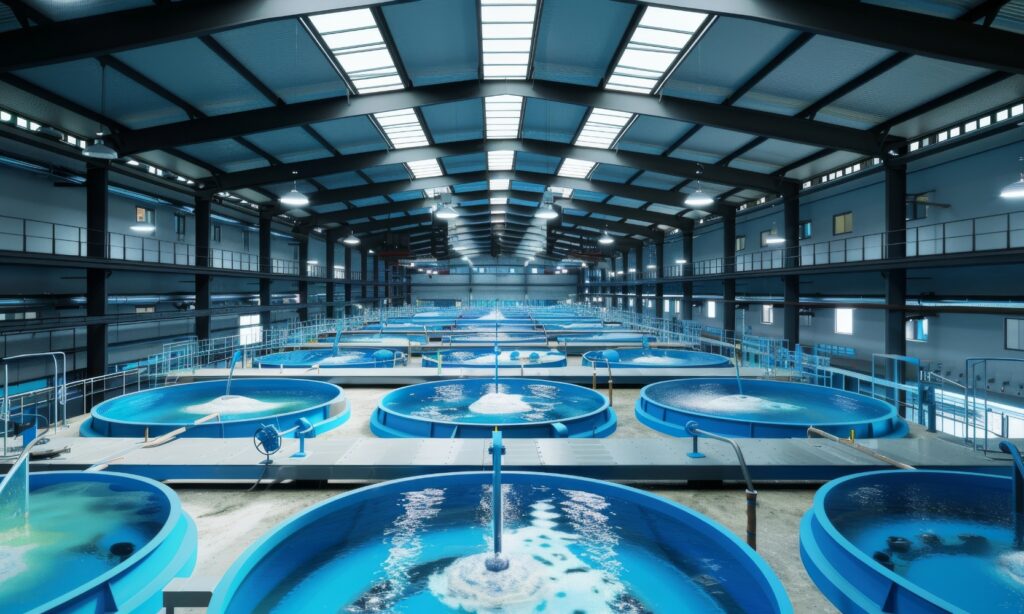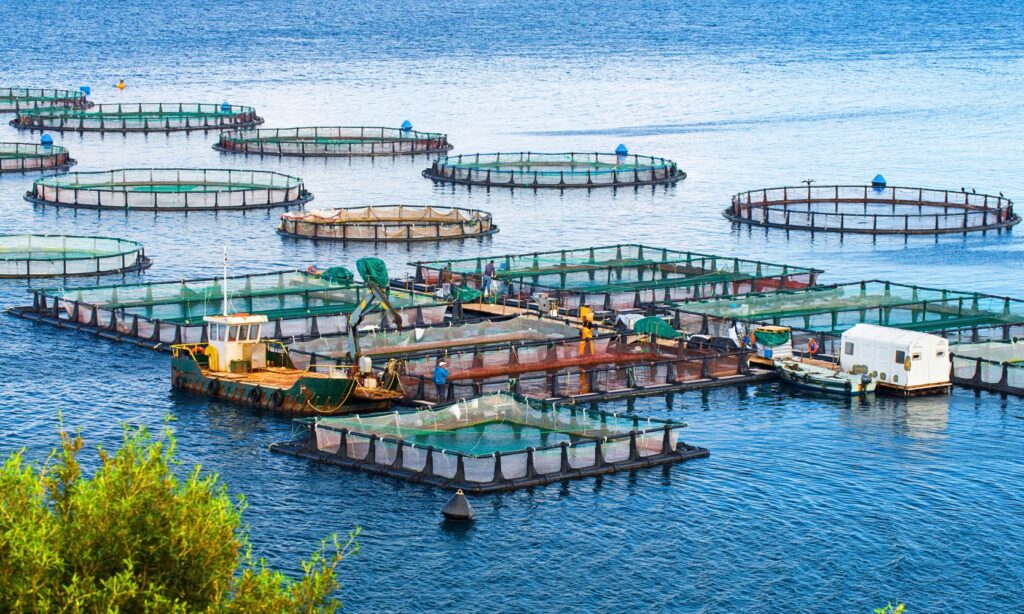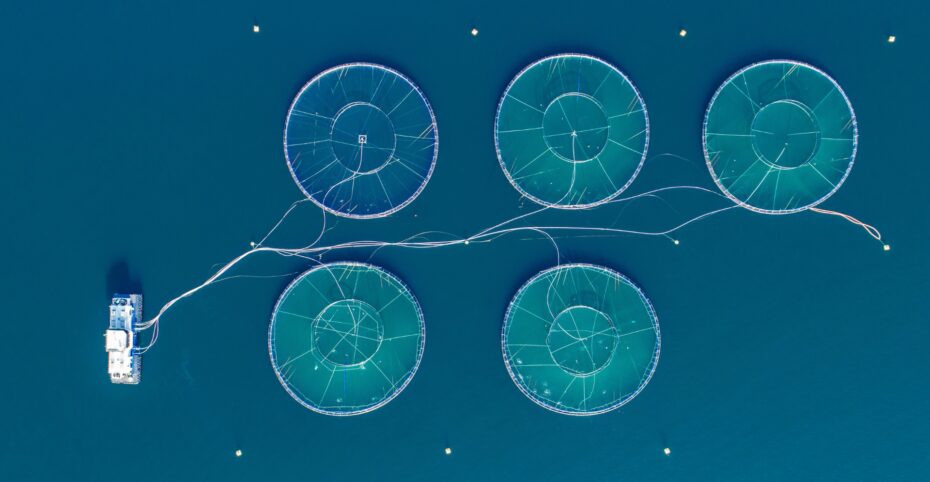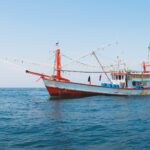Integrated multi-trophic aquaculture (IMTA) is innovating the future of seafood production. From waste reduction to versatile system access and multiple revenue streams, aquafarms gain various benefits from IMTA production methods.
Although multi-trophic aquaculture can be the solution to overfishing, the industry still faces several challenges to ensure responsible farming practices.
Learn more about IMTA, its advantages, and the sustainable solutions required to resolve current industry-wide issues.
What is Integrated Multi-Trophic Aquaculture (IMTA)?

Integrated multi-trophic aquaculture (IMTA) is a type of aquafarming system used to produce seafood commercially. It cultivates multiple aquatic species, known as polyculture, while conventional aqua systems farm single species. IMTA system setups are versatile, as they can be land-based via tank culture or water-based via net pens.
IMTA is designed to reduce waste, promote resource efficiency, and increase product diversification for aquafarms. It recycles the metabolic waste of uneaten fish feed and feces from their top-level trophic species, then repurposes it into food for lower-level trophic species, like macroalgae and gastropods.
The cultivation of numerous species also helps boost profits for IMTA farms. Because they’re harvesting and selling multiple seafood products, it increases profitability and reduces market risks.
Advantages of Integrated Multi-Trophic Aquaculture & Solutions Required for Sustainable Farming
Below are the main benefits of IMTA aquaculture, common industry challenges with this system, and how aquafarms can improve their production processes for sustainability.
IMTA Recycles Wasted Products Into Resources for Other Aquatic Species But Requires Effective System Management
The most notable benefit of integrated aqua systems is their ability to minimize waste and ecological hazards. Water-based IMTA farms repurpose fish waste into bottom-feeder food, reducing waste and promoting sustainable production as a result.
Additionally, IMTA farms often use aquatic species, like seaweed, algae, and shellfish, that naturally clean and filter water before discharging it back into fresh or saltwater bodies. This practice prevents environmental pollution from discharged IMTA water.
However, for aquafarms to fully leverage the sustainable benefits of IMTA, effective system management is required.
Solution: Hire Qualified Staff with IMTA Waste Management Skills
IMTA aquaculture requires comprehensive waste management to promote successful, sustainable production. IMTA farms must hire staff with the scientific and technical skills to properly balance inputs, like fertilizers and fish feed, with nutrient influxes.
Otherwise, it risks environmental pollution from improperly treated water being released and increased waste from mismanaged resources. Hiring IMTA system management operators also provides job opportunities and supports the local economy by merging the gap in the skills often missing in the aquaculture industry.
IMTA Can Cultivate Multiple Species But Are Complex & Costly Operations

Integrated multi-trophic aquaculture can farm multiple aquatic species in the same area. Unlike traditional aquaculture systems that can only cultivate one species, IMTA has polyculture capabilities.
As mentioned, IMTA farms use fish waste from their primary farmed species to feed organisms like seaweed and algae. They can create separate, close habitats or underneath their farm sites to manage the cultivation of multiple aquatic species.
Although IMTA uses more complex systems and has higher operational costs, it allows aquafarms to build more resilience. Because IMTA farms produce different seafood products, they can develop multiple revenue sources and diversify cash flows.
Skilled IMTA operators with R&D experience can also optimize aquafarm systems for more efficient resource and financial management.
Solution: More Government Regulations & Incentives for IMTA Farms to Adopt This Approach
While IMTA offers several benefits for aquafarms, they often don’t have the financial means for the high upfront costs it requires. Government bodies must provide more financial support and incentives for aquafarms to access and adopt optimized IMTA systems.
Federal government-funded aquaculture grants provide financial assistance, and low-interest loans from financial institutions can lower upfront IMTA investments. In return, it influences key stakeholders who invest in aquafarms to implement efficient IMTA production while safeguarding local aquatic ecosystems.
The government should also offer nutrient trading for IMTA farms. This support can provide nutrient credits to reduce overall harmful mineral levels, like carbon and nitrogen, or remove them entirely over chemical-based water treatment.
Additionally, government bodies must modernize existing IMTA aquaculture regulations. Current legislation doesn’t include the ecosystems beyond the licensed IMTA farm sites. It only regulates the waste and nutrients within them, creating a loophole for IMTA farms when they discharge water into the environment—which can be detrimental if it’s not done properly.
IMTA Farms Can Be Land or Water-Based But Have Nearshore Environmental Risks
Multi-trophic aquaculture can utilize land-based water tanks, freshwater, or saltwater net pen systems. It allows aquafarms to access the IMTA systems they need, like urban areas or locations with limited water resources. However, nearshore IMTA farms have significant environmental hazards.
IMTA farms with nearshore operations increase pressures on local ecological systems. Because nearshore waters have low seafloor depth and flushing rates, high-volume levels of harmful dissolved nutrients can trigger toxic algae blooms and negatively impact phytoplankton species—especially with large-scale IMTA systems.
Solution: Move IMTA Operations to Existing Offshore Infrastructures with BAP Assistance
Relocating nearshore IMTA farms offshore or to land-based systems can reduce local ecological system pressures. Cultivating via land tanks or deep coastal waters via closed net pens, along with sustainable waste and resource management, can help prevent these environmental risks.
However, this relocation requires high costs for IMTA farms. Moving to existing land-based infrastructures can lower the investments in building and deployment costs. IMTA farms can also apply for BAP certification to assist in developing sustainable end-to-end production processes.
Sustainable IMTA Aquaculture Is Possible: Support SIAA’s Mission Today
IMTA farms don’t have to choose between sustainability and profitability. It’s possible to resolve IMTA industry issues while safeguarding aquatic ecosystems.
At SIAA, our causes include elevating aquaculture practices through innovation, conservation, and collaborative action. We partner with the Federation of European Aquaculture Producers (FEAP) to lobby for stronger, sustainable policy changes in the aquaculture industry and create legislation to protect global aquatic ecosystems simultaneously.
Let’s reshape the future of how we produce seafood together.
Support our cause by making a one-time donation or becoming a SIAA member today.





